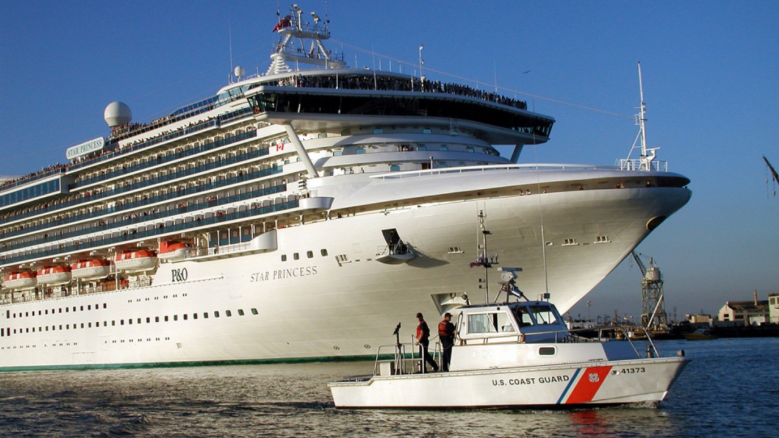
At least three cruise ship employees have taken their own lives and several more have started a hunger strike after being unable to get off the ships for two months due to coronavirus concerns.
While several cruise line employees have died of COVID-19, according to the website Crew Center others have taken their own lives. Since April 30, two cruise line employees have jumped to their deaths from the ships they’d been stranded on and another killed himself in his cabin.
On May 10 a Ukrainian woman who worked on the Regal Princess in Rotterdam jumped from the ship and died after her chartered flight home was canceled. A 29-year-old crew member from Hungary was found dead from an apparent suicide in his cabin on the Carnival Breeze cruise ship on May 9, and on April 30 another man jumped to his death off the Jewel of the Seas near the coast of Greece. His body was not found, according to Crew Center.
Crew Law News reported that a fourth man was found dead on Mariner of the Seas Sunday, but the cause of death for the Chinese National was not stated. “He is the third crew member to have died in just the last two days, and the fourth ship employee to have died in a little over a week.”
A crew member told the Miami Maritime Attorney who writes the Crew Law News blog, Jim Walker, “It’s the saddest thing that endless waiting is taking the lives of innocent and hard-working crew members.”
Some Cruise Ship Employees Are On a Hunger Strike to Try to Make their Employers Help Them Get Home
The Miami Herald reported that 14 crew members on Royal Caribean’s Navigator of the Seas cruise ship are on a hunger strike. The ship is docked in PortMiami. According to the newspaper, one of those involved in the strike told the paper they are doing it to pressure the cruise line to work harder to get them home.
The crew member spoke to the Miami Herald reporter but asked not to be named for fear of retaliation from his employer that may slow his repatriation. He told them, “At this moment, we feel that we’re all hostages. This company needs to understand we are not boxes of food that can be moved around.”
Laura Poveda, a Columbian accountant who has been stuck on the Norwegian Epic off the Miami Coast for two months told USA Today, “I see that things are going back to normal and the CDC and cruise company keep us like prisoners here. We don’t have any (coronavirus) cases. So why are we still not able to go home?”
Seventy Thousand Cruise Ship Workers Have Been Stuck on Ships in US Waters Alone Since Mid-March
According to the Coast Guard, cruise lines have been on a voluntary suspension to and from U.S. ports of call since March 13. The CDC issued a “No Sail” Order on March 14 to all cruise ships that did not voluntarily suspend operations.
While cruise ship passengers endured some quarantining on ships, they have since been allowed to go back home. That’s not the case for cruise ship employees.
A Coast Guard spokesperson told Heavy, “Currently, the Coast Guard is monitoring 33 cruise ships anchored in U.S. waters with approximately 20,800 crew members on board, and 26 cruise ships moored in U.S. ports with approximately 19,500 crew members on board. There are an additional 43 cruise ships underway in U.S. waters with approximately 29,800 crew members on board.”
But it doesn’t sound like stranded crew members will get home soon. They seem to be mired in bureaucracy. A letter to members of the ITF Seafarers Union on May 11 explained that there is a roadmap to getting them home, but it’s only a “step in the right direction.”
The letters said:
After weeks of intense work by the ITF, and many of its affiliated seafarer unions, developing protocols and lobbying industry and governments, the international maritime community has finally secured a ‘roadmap’ for governments to facilitate crew changes. Consequently, on May 5, the International Maritime Organisation (IMO) issued a 12-step plan to their 174 Member States on how to ‘restart’ crew changes so that seafarers can disembark, and fresh crews can be deployed. Unfortunately, this does not automatically mean that restrictions will be lifted immediately since each government must put in place processes and procedures for crew changes to happen, but it is a step in the right direction.
READ NEXT: Professor’s Blog Post on New Tips to Avoid Coronavirus Goes Viral